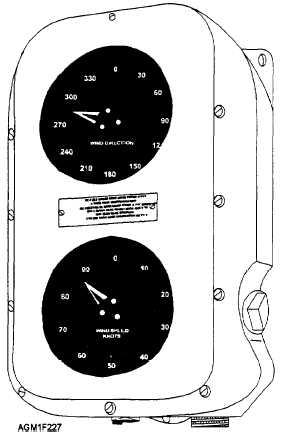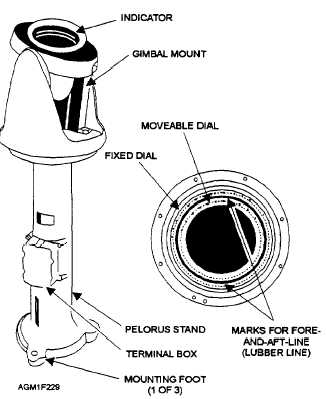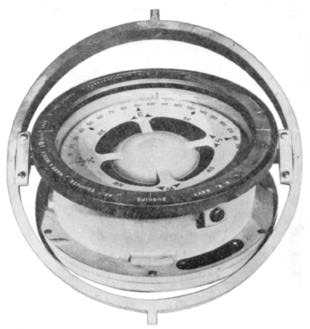All ships have a minimum of two wind transmitters,
located on the port and starboard yardarms. The switch
used to control the transmitter in use is usually located
on the bridge on smaller ships, but may be located in the
geophysics office aboard aircraft carriers. Normally,
the windward-side transmitter is used. The transmitters
are very similar to the ML-400/UMQ-5 transmitters.
The transmitter selected reports wind direction
relative to the bow of the ship and wind speed relative to
the ship’s motion. These winds are called relative winds.
Several Type B-3 relative wind indicators (fig. 2-27) are
installed throughout each ship in various locations. To
convert relative wind to true wind, you must also know
the ship’s true heading (available from the magnetic
compass [fig. 2-28] or gyroscope repeater [fig. 2-29]),
as well as the ship’s speed (available from the
underwater-speed log indicator [fig. 2-30]). If a
magnetic compass is used for the ship’s course, to obtain
a true heading, the magnetic declination must be added
to the compass heading before that number is used in a
true-wind computation. Gyro repeaters are preferable
for conversion, since these readings are true headings.
Both gyro repeaters and underwater-speed log
indicators are usually located in the geophysics office,
as well as on the bridge and at other strategic locations
throughout the ship.
Figure 2-27.—Type B-3 shipboard relative-wind direction and
relative-wind speed indicator.
Figure 2-28—Shipboard magnetic compass.
Figure 2-29.—Shipboard pelorus with a gyroscope repeater.
2-21






